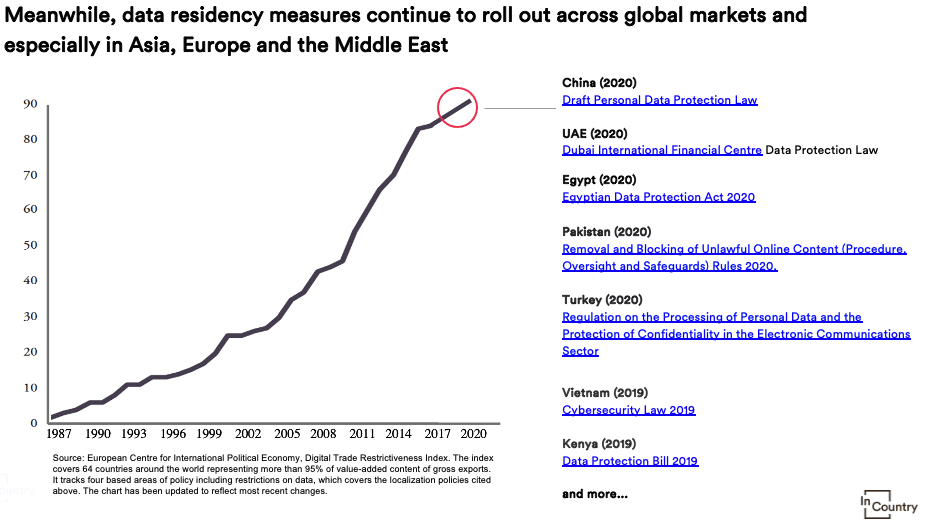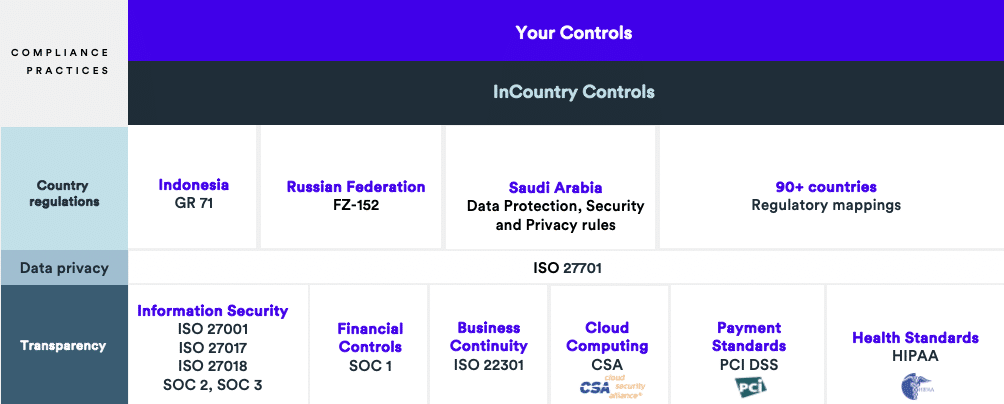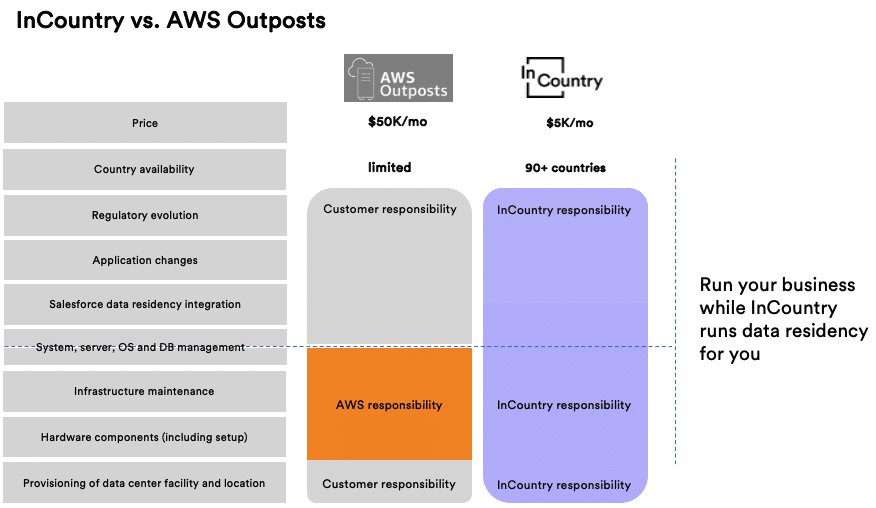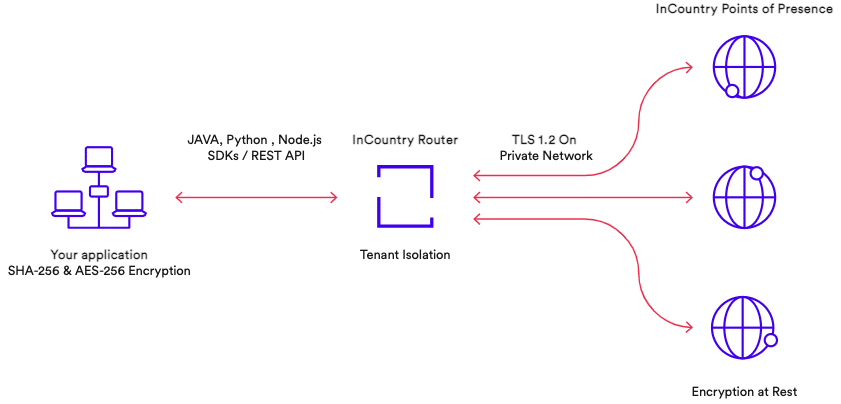Countries worldwide are placing more compliance requirements on organizations of all types, and the last thing a global company wants is to have these requirements disrupt their business plans, like expanding into new countries. These companies turn to the cloud with their digital transformation plans; however, things get complicated very quickly when it comes to multi-country compliance and data residency regulations.

InCountry isn’t the only way to solve for data residency, but it is the fastest and most compliant way to extend applications using a scalable, distributed architecture that ingests, stores, processes, and delivers data residency as a service. In this two-series blog, we’ll look into other ways to solve data residency and how InCountry compares to them. In the first part, we’ll dive into ways to implement data residency for internal apps, and the second part will cover SaaS apps, including Salesforce and the latest news announcement, Salesforce Hyperforce.
Compliance-centric solution
Regards of the type of app, InCountry’s compliance-centric solutions ensure every part of the data stack is compliant with country-based regulations and policies throughout its entire life cycle in that country. The goal is to protect sensitive and regulated data in an efficient and easy-to-manage way.

Organizations might have a business need that cannot sufficiently be met with “off-the-shelf” solutions. As a result, they often build their own custom (“homegrown”) applications to achieve their desired objectives. However, extending the infrastructure of these custom applications to cover new regions can be expensive. For example, new business requirements or compliance mandates may dictate that a new policy must be created or updated in the custom application to accommodate the change. This process is expensive and limits the organization’s ability to respond rapidly in its business environment. Here are a couple of ways companies consider when implementing data residency for internal apps.
On-premises with your own data center
Companies large enough to still build their own apps can probably build their own data centers too (or racks within a colocation facility) in countries in which they’re expanding and developing a strategy to localize data. This might sound straightforward on the surface, but the issues of maintaining a data center – like cost, scalability, and manageability – quickly add up. Even if the amount of data is small, replicating and maintaining different sets of sensitive data in different locations becomes a real challenge. There is a regulatory aspect that is continuously changing, and the infrastructure and strategy would have to accommodate and change with it.
The cloud with a hyperscaler
Hyperscalers have changed the way we compute, and InCountry owes part of its success to their scale as our platform is cloud-agnostic and can run on all of them. Companies looking to extend their internal apps can do so if their hyper-scale of choice happens to be in the target country. Besides building the infrastructure, they can rebuild the same application for the target country. That’s usually a lost proposition due to the difficulty of building and managing different versions of a homegrown app. They can also extend the original application by spinning a new database, an integration tier, and an application tier for local processing. That also usually requires changes and disruption to the central application, additional cost, and effort, including the regulatory and compliance understanding and needs.
On-premises with AWS Outposts
Companies that have embraced the public cloud might look into extending those clouds on-premises with a solution like AWS Outposts. Such a solution can be costly and hard to maintain as companies have to keep up with an ever-changing regulatory landscape. Plus, companies still have to build and maintain the data and integration layers. Most often than not, this becomes a big challenge that companies do not have the budget or the skills needed.

The InCountry Solution
The InCountry platform, which provides a set of SDK and API tools, enables you to programmatically extend your internal app in new countries without making any changes to your existing architecture. You can secure and localize each country’s data within its own borders. Our SDK is available in Python, Node.js, and Java, with more on the way. The platform is cloud-agnostic and can run on any cloud provider you prefer. The result is your internal app, only now extended and compliant in new over 90 countries. And since the scope is only on regulated data, the overall architecture remains slim and easy to manage.

Check out our internal apps page for more, and our developers portal to learn more about our tools, and be on the look for part 2 of this blog discussing the options to solve for data residency for SaaS, with a deep dive into Salesforce.


